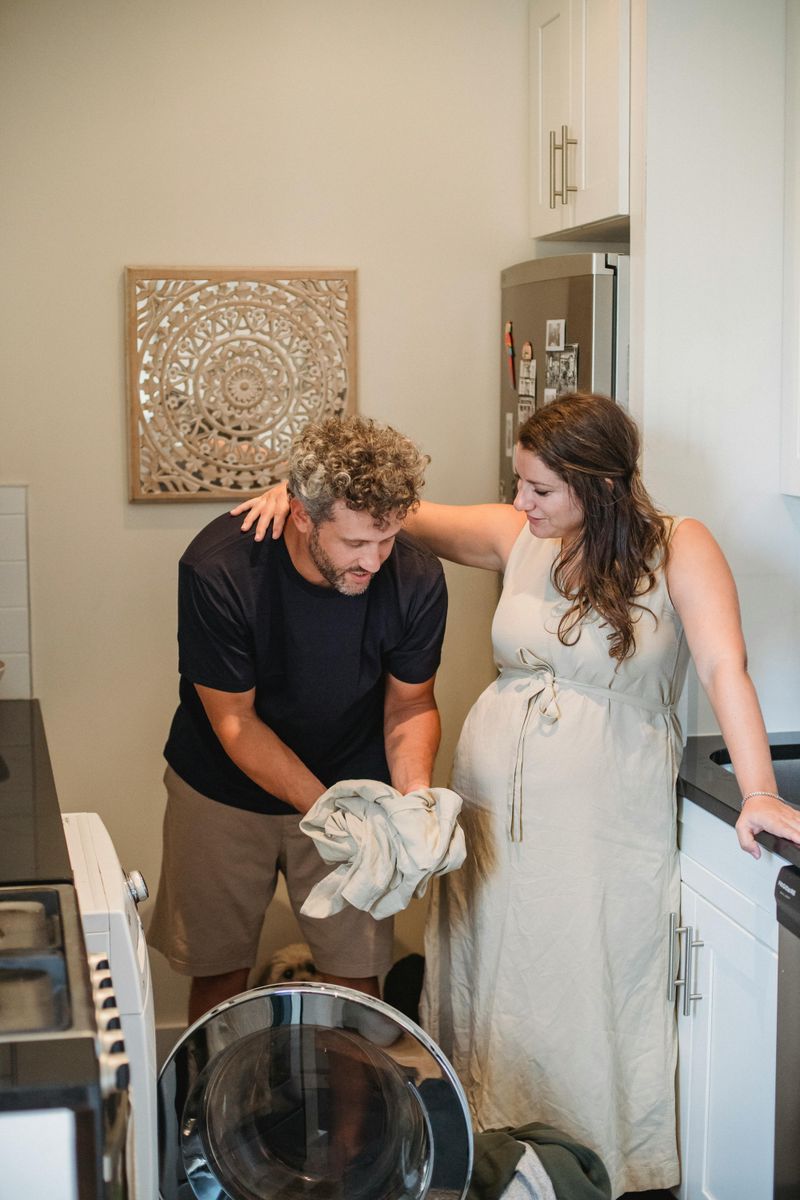When someone we love is going through a tough time, our natural instinct is to help them feel better. But taking on their stress can drain us emotionally and actually make things worse for both people. Supporting a partner means being there for them while keeping your own emotional health intact. These practical strategies will help you be the rock your partner needs without sinking under the weight of their worries.
1. Listen with your full attention
Being truly present when your partner talks about their problems creates a safe space for them to unload. Put away your phone, turn off the TV, and focus completely on what they’re saying without planning your response.
Sometimes people just need to be heard, not fixed. Nodding, maintaining eye contact, and asking thoughtful questions shows you care without trying to solve everything immediately.
This kind of attentive listening helps your partner feel valued and understood, which can reduce their stress naturally without you absorbing it yourself.
2. Acknowledge feelings without judgment
“I hear that you’re feeling overwhelmed” goes much further than “You shouldn’t worry so much.” Validating emotions doesn’t mean you agree with every thought behind them – it simply recognizes their feelings as real and important.
Phrases like “That sounds really difficult” or “I can see why you’d feel that way” create emotional safety. Your partner doesn’t need you to share their anxiety to feel supported.
Validation acts as an emotional pressure release valve, allowing them to process feelings more effectively while you maintain your own emotional balance.
3. Suggest healthy stress outlets
Physical activity works wonders for releasing tension. When your partner seems overwhelmed, gently encourage them to join you for a walk, try a quick yoga session, or even just stretch for five minutes.
Creative outlets like journaling, painting, or playing music can transform stress into something productive. These activities give their worries somewhere to go besides staying trapped in their mind – or transferring to yours.
The key is suggesting without pushing. Offer these options as possibilities rather than prescriptions, allowing them to find what works best for their unique situation.
4. Take care of practical matters
Handling small tasks can lift an enormous weight from your stressed partner’s shoulders. Making dinner, running errands, or tackling household chores creates breathing room for them to process their feelings.
The beauty of practical help is that it’s concrete and doesn’t require you to take on their emotional burden. Actions speak volumes when words fall short.
Focus on things you can control rather than trying to fix their problems directly. This approach gives them space while showing tangible support that makes a real difference in their day-to-day experience.
5. Create clear emotional boundaries
Healthy boundaries protect both of you. Phrases like “I’m here to support you, but I can’t solve this for you” help clarify where your responsibility ends and theirs begins.
Setting time limits for discussing problems prevents emotional exhaustion. “Let’s talk about this for 30 minutes, then do something lighter” keeps you from drowning in extended worry sessions.
Boundaries aren’t selfish – they’re necessary for sustainable support. Without them, you risk compassion fatigue, which ultimately makes you less effective at helping your partner when they truly need you.
6. Maintain your own calm presence
Your emotional state is contagious. When you remain steady during your partner’s storm, you provide an anchor that helps them regain balance without words or actions.
Deep breathing techniques can keep you centered when their stress threatens to spill over. Try counting to four as you inhale, hold for four, then exhale for six whenever you feel yourself getting pulled into their anxiety.
Remember that staying calm isn’t the same as being cold or distant. You can show warmth and concern through your facial expressions and gentle touch while maintaining your emotional equilibrium.
7. Check in with direct questions
Mind-reading attempts often lead to misunderstandings. Simple questions like “What would help you most right now?” or “Do you want advice or just someone to listen?” cut through assumptions.
Many people jump into fix-it mode when their partner might just need a hug or quiet company. Asking directly honors their agency and prevents you from wasting energy on unwanted solutions.
This approach also respects that needs change from moment to moment. What helped yesterday might not work today, and checking in acknowledges this natural evolution of support requirements.
8. Practice empathy without absorption
Understanding your partner’s feelings doesn’t require experiencing them yourself. Imagine standing beside them looking at their problem rather than stepping into their emotional shoes completely.
This distinction allows you to offer meaningful support without becoming overwhelmed. Think of it as holding their hand while they walk through a difficult situation instead of carrying them through it.
Compassionate detachment might sound contradictory, but it’s actually the sweet spot for effective support. It keeps you connected enough to care deeply while separated enough to offer perspective they might not see from within their stress.
9. Connect them with professional resources
Some burdens are too heavy for partners alone. Gently suggesting therapy, coaching, or support groups acknowledges the limits of what romantic relationships can solve.
Framing professional help as a sign of strength rather than weakness makes it more approachable. “I’m amazed at how you’re handling this, and a professional might have additional tools that could make things even better.”
Having resources ready – like therapist recommendations or group meeting times – removes barriers to getting help. This proactive approach shows support while recognizing that some problems require specialized assistance beyond what you can provide.
10. Stick to your personal routines
Maintaining your exercise schedule, hobbies, and friendships isn’t selfish – it’s necessary for sustainable support. Your well-being creates a foundation of strength that benefits both of you.
When your partner sees you continuing healthy habits despite challenges, it normalizes self-care during difficult times. This modeling effect can actually inspire them to maintain their own routines.
Continuing your normal activities also provides reassuring stability when other things feel chaotic. The predictability of your patterns creates a sense of safety that can be profoundly comforting to someone experiencing stress.
11. Demonstrate healthy coping strategies
Actions teach more effectively than words. When you handle your own challenges with deep breathing, journaling, or talking things through calmly, you show rather than tell what healthy stress management looks like.
Sharing your own coping process creates connection without pressure. “When I felt overwhelmed at work, taking a five-minute walk helped me reset” offers a technique without demanding they use it.
This approach works because it’s non-confrontational and respects their autonomy. They can observe what works for you and adapt those strategies to fit their own needs and personality.
12. Recognize and celebrate progress
Small victories deserve acknowledgment. Noticing when your partner uses a new coping skill or handles a situation better than before reinforces positive change without taking responsibility for it.
Specific observations make the biggest impact. “I noticed how you took a moment to breathe before responding to that email – that was really impressive” highlights exactly what worked well.
This celebration creates an upward spiral of improvement. When people feel their efforts are seen and appreciated, they become more motivated to continue growing, which naturally reduces their stress over time.
13. Express love through small gestures
Unexpected kindness speaks volumes during difficult times. A cup of their favorite tea appearing when they’re working late or a sticky note with an encouraging message can provide emotional lifelines without requiring deep conversation.
Physical touch – a hand squeeze, back rub, or long hug – bypasses words entirely to communicate support. These connections release oxytocin, naturally counteracting stress hormones.
The beauty of small gestures is their simplicity. They don’t demand emotional processing or problem-solving from either of you, yet they create powerful reminders that your partner isn’t facing their challenges alone.













